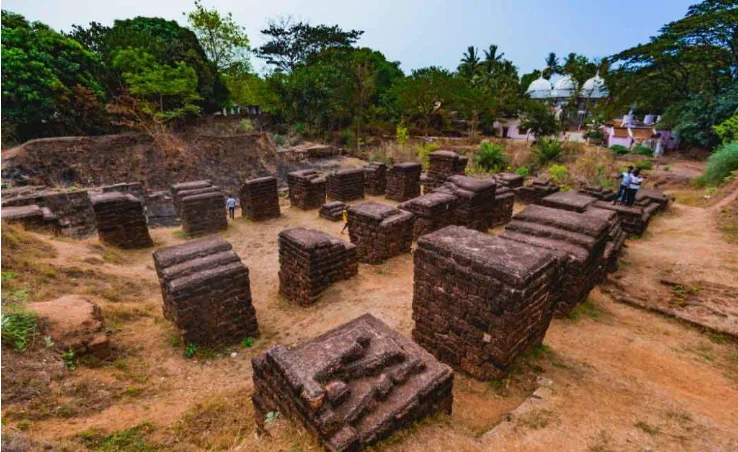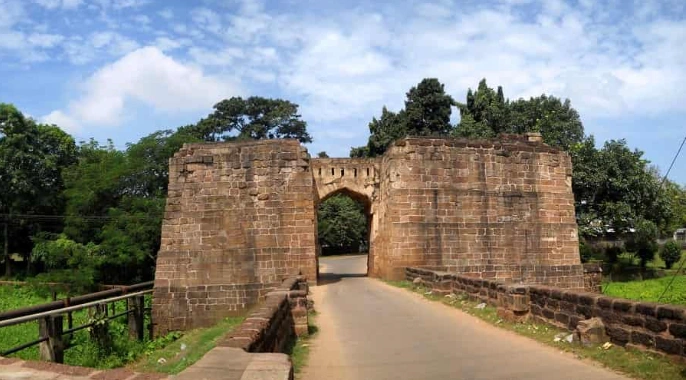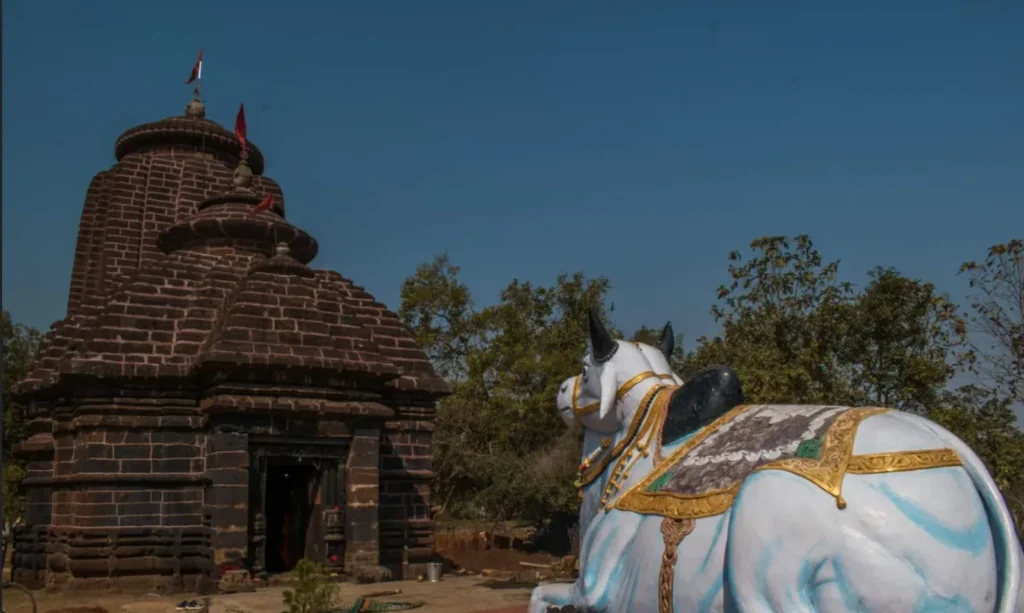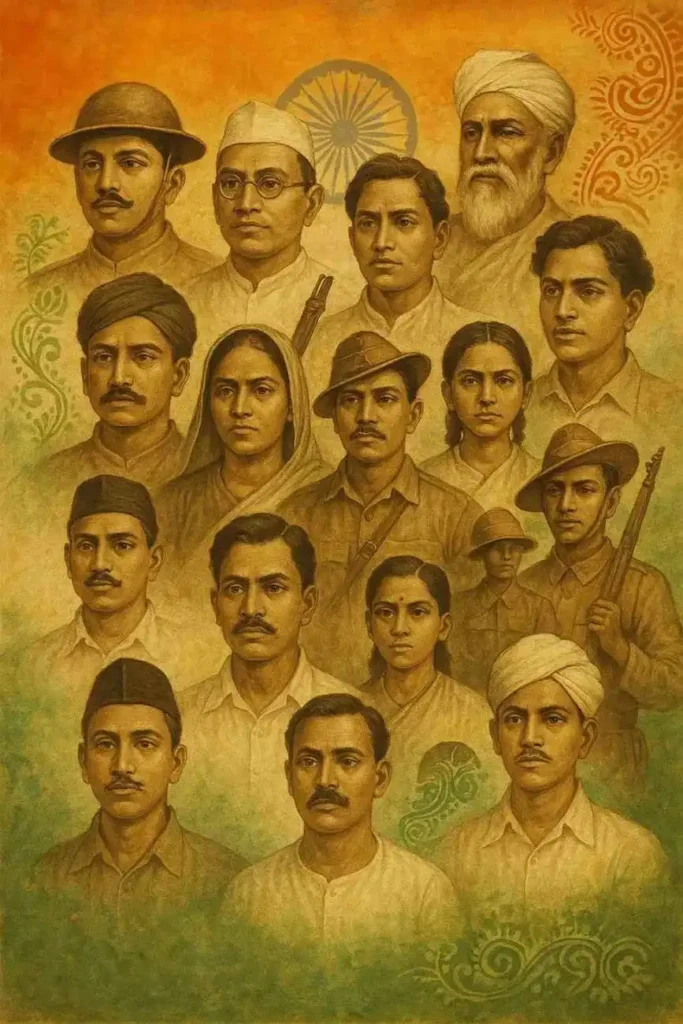
Table of Contents
Cuttack isn’t just a city — indeed, it’s a living museum of Odisha’s grand past. With that in mind, and with over a thousand years of history embedded in its soil, this heritage city beckons history enthusiasts, archaeologists, and curious travelers alike. Therefore, let’s explore the incredible archaeological remains of Cuttack, where every ruin whispers stories of empires, trade, architecture, and devotion.
A City of Strategic Origins
Cuttack’s location between the Mahanadi and the Kathajodi rivers wasn’t accidental. In fact, the city was originally established as a fortified settlement, tactically placed to resist invasions. Historically, the records confirm that the city came into prominence during the reign of King Anangabhima Deva III in the 13th century. However, archaeological evidence suggests much older origins.
Remains of the Barbati Fort: The Heart of Medieval Cuttack
Among all historical structures in Cuttack, the Barbati Fort stands as the most iconic. Originally, it was constructed by the Ganga dynasty and later on, fortified by the Mughals and Marathas. Historically, this fort once had massive stone walls, a moat, and strategic ramparts. Even today, the remains of its gateways, citadel, and defensive walls can still be seen. Moreover, excavations have unearthed semi-circular bastions and laterite blocks, reflecting early Odisha-style fort architecture.

Relics That Reveal Trade and Craftsmanship
Beyond the forts and temples, archaeologists have also discovered household items that paint a vivid picture of early urban life. Moreover, sites like Jobra, Chandnichowk, and Lalbag have yielded coins, beads, terracotta figurines, and iron tools—suggesting Cuttack was a bustling center of trade and craft. Interestingly, pottery from these excavations matches designs found in other eastern Indian urban centers, hinting at a broad trade network.
Temples in Ruins: The Spiritual Soul of Silver City
Furthermore, the city’s sacred geography includes traces of ancient temples that once thrived along riverbanks and strategic city corners. Although many structures are in ruins, architectural remnants such as carved door jambs, deity figurines, and stone platforms remain. Collectively, these findings highlight Cuttack’s strong link to Shaivism and Vaishnavism.

Hydraulic Engineering: Cuttack's Ancient Water Systems
Moreover, archaeologists have uncovered remains of sophisticated water management systems in the city—underground drains, paved streets with slopes for water flow, and rainwater harvesting pits. Indeed, such findings prove that ancient Cuttack had a well-thought-out infrastructure, quite advanced for its time.
People Also Ask
1. What is the historical importance of Cuttack?
Cuttack is over 1000 years old and served as Odisha’s capital for centuries. It was a strategic military base and cultural hub, evident from its archaeological and literary heritage.
2. Which fort is the most famous in Cuttack?
The Barbati Fort is the most significant archaeological landmark in Cuttack, reflecting multiple layers of military architecture.
3. Are there any ancient temples in Cuttack?
Yes, Cuttack houses remnants of many ancient temples dedicated to Hindu deities, although many are in ruins today.
4. What kind of artifacts were found in Cuttack?
Excavations have uncovered coins, pottery, beads, tools, and terracotta figures, indicating vibrant trade and craft activity.
5. Why is Cuttack called the Silver City?
Cuttack earned the title “Silver City” due to its world-renowned silver filigree work, a traditional art that continues to thrive today.
Preserving the Echoes of Time
Even as the Silver City evolves into a modern urban space, meanwhile, the echoes of its historic legacy continue to resonate. Moreover, these archaeological remains not only enrich our understanding of Eastern India’s past but also remind us of the importance of preserving heritage. Therefore, initiatives in documentation, restoration, and responsible tourism are crucial to maintaining the integrity of the historic capital.
Plan Your Journey into the Past
Are you a heritage enthusiast or a curious traveler looking to uncover Odisha’s hidden gems? If so, make the Silver City your next destination. Whether you’re exploring Barabati Fort, walking through ancient trade routes, or simply soaking in the ambiance of a city built on centuries of culture—the historic capital never disappoints.
To begin with, start your trip from Barabati Fort and move towards Chandnichowk to witness the relics up close. In addition, don’t forget to check local museums for curated archaeological findings.Final Thoughts
Cuttack’s archaeological story is one of resilience, richness, and remarkable continuity. Moreover, if you love Indian history, ancient cities, or simply enjoy discovering what lies beneath the surface of a bustling town, then Cuttack should definitely be on your radar.
Come, walk through the lanes of time and feel the legacy of Cuttack under your feet.


